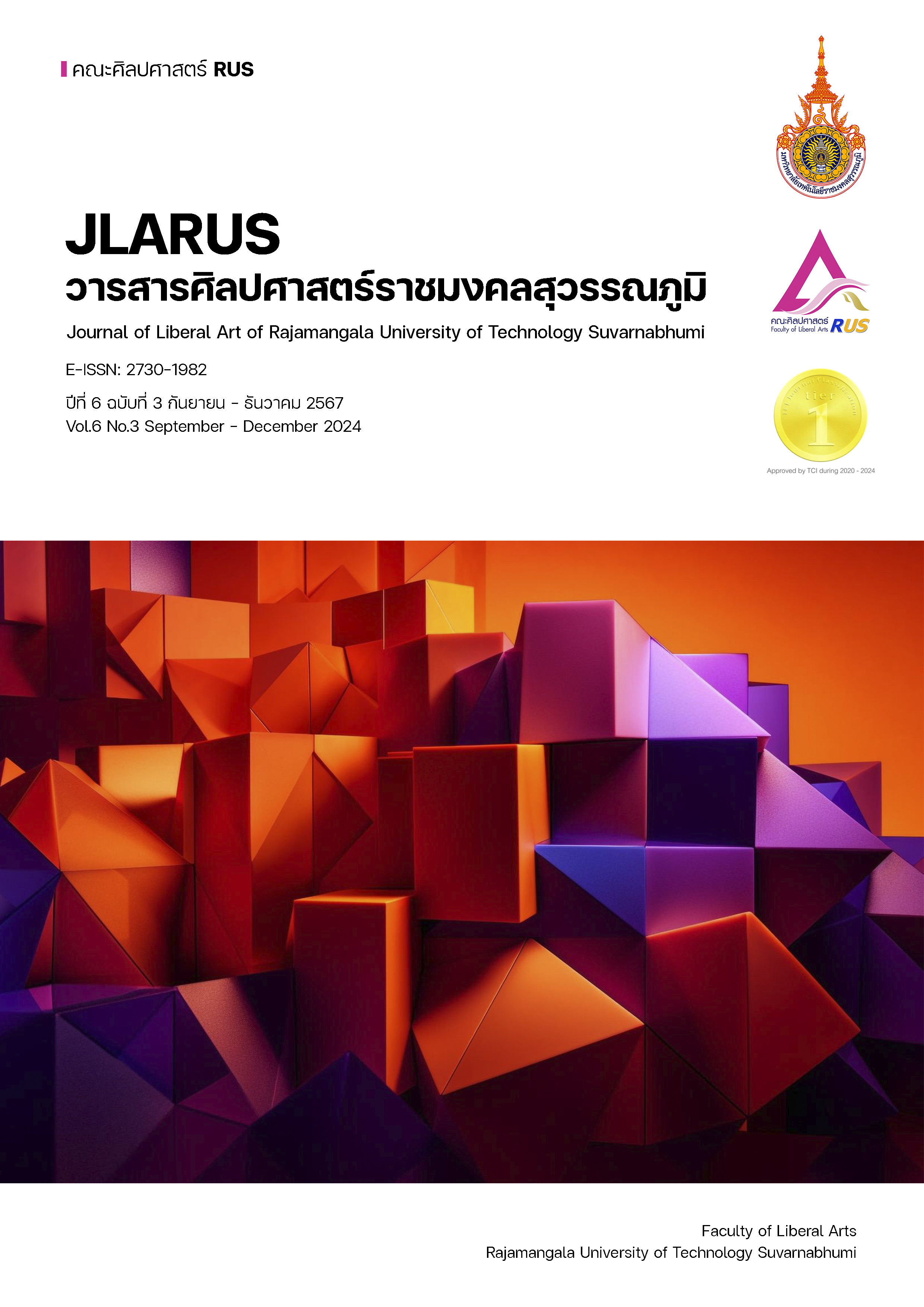DEVELOPMENT OF THAI LITERATURE READING LITERACY AND CREATIVE THINGKING OF GRADE 9 STUDENTS THROUGH CREATIVITY-BASED LEARNING COMBINED WITH CREATIVE ART ACTIVITIES
Main Article Content
Abstract
This research aimed: 1) to develop the ability to read Thai literature of grade 9 students by organizing creative-based learning combined with creative art activities, with the goal of having 80 percent of students passing the criteria of 80 percent or higher, and 2) to develop the creative thinking abilities of grade 9 students by using creative learning management alongside creative art, aiming for 80 percent of students to meet the criteria with 80 percent or more. The target group was Mathayom 3/4 students at Kham Kaen Nakhon School, located in Sila Subdistrict, Mueang District, Khon Kaen Province. This research was an action research. The tools used in the research included lesson plans, learning management results recording forms, student learning behavior observation forms, creative thinking ability assessment forms, tests to measure knowledge ability in reading Thai literature at the end of the operational cycle, assessments of knowledge ability in reading Thai literature, and tests to measure creative thinking ability at the end of the practice cycle. Statistics used in data analysis were divided into 2 types: 1) Analyzing quantitative data by finding the mean standard deviation (SD) and percentage %, and 2) Analyzing qualitative data. Data were analyzed using descriptive content analysis. The research results were as follows: 1) students had 82.43 % ability in reading literacy Thai literature, and students who passed the criteria account for 83.87 % or more, which was higher than the specified criteria, and 2) students had creative thinking ability of 90.32 % and students who passed the criteria were 84.62 % or more, which was higher than the specified criteria.
Article Details

This work is licensed under a Creative Commons Attribution-NonCommercial-NoDerivatives 4.0 International License.
References
กิ่งฟ้า สินธุวงษ์. (2550). การสอนเพื่อพัฒนาการคิดและการเรียนรู้. ขอนแก่น: สำนักพิมพ์มหาวิทยาลัยขอนแก่น.
บุษบา บัวสมบูรณ์, พิณพนธ์ คงวิจิตต์ และกิตติพงษ์ แบสิ่ว. (2564). รูปแบบการจัดการเรียนรู้วรรณคดีโดยบูรณาการศิลปะเมื่อการศึกษาวรรณคดีส่องสว่างต่องานศิลปะ. วารสารศึกษาศาสตร์ มหาวิทยาลัยศิลปากร, 19(1), 53-67.
ทัศนีย์ เศรษฐพงษ์ และวิภาวรรณ เอกวรรณัง. (2563). การพัฒนาความสามารถในการรู้เรื่องการอ่านตามแนวทางการสอบแบบ PISA โดยใช้แนวคิดการอ่านจากต้นแบบของนักเรียนระดับ ชั้นมัธยมศึกษาตอนต้น. วารสารศึกษาศาสตร์ มหาวิทยาลัยขอนแก่น, 2(1), 85-98.
มงคล เรียงณรงค์ และลัดดา ศิลาน้อย. (2558). การพัฒนาทักษะการเรียนรู้ในศตวรรษที่ 21 และ ผลสัมฤทธิ์ทางการเรียนโดยใช้รูปแบบการสอนแบบสร้างสรรค์เป็นฐาน (CBL) ของนักเรียนชั้นมัธยมศึกษาปีที่ 1 รายวิชา ส21103 สังคมศึกษา. วารสารศึกษาศาสตร์ มหาวิทยาลัยขอนแก่น, 38(4), 141-148.
รัตภรณ์ อุทุมพร และวณิชชา สิทธิพล. (2566). ผลของการจัดกิจกรรมศิลปะสร้างสรรค์ที่มีต่อการส่งเสริมความเชื่อมั่นในตนเองของนักเรียนระดับชั้นอนุบาลปีที่ 1. วารสารเทคโนโลยี คหกรรมศาสตร์และนวัตกรรม, 2(1), 21-30.
วิริยะ ฤาชัยพาณิชย์. (2558). การสอนแบบสร้างสรรค์เป็นฐาน Creativity-based (CBL). วารสารนวัตกรรมการเรียนรู้, 1(2), 23-37.
ศูนย์ดำเนินงาน PISA แห่งชาติสถาบันส่งเสริมการสอนวิทยาศาสตร์และเทคโนโลยี. (2565). ผลการประเมิน PISA 2022. กรุงเทพมหานคร: สถาบันส่งเสริมการสอนวิทยาศาสตร์ และเทคโนโลยี.
สมนึก ภัททิยธนี. (2551). การวัดผลการศึกษา. (พิมพ์ครั้งที่ 6). กาฬสินธุ์: ประสานการพิมพ์.
สรวงมณฑ์ สิทธิสมาน. (2563). ความคิดสร้างสรรค์ของเด็กไทยที่หายไป. สืบค้น 3 เมษายน 2567. จาก https://www.thaipbskids.com/contents/5f6188f917d8e5bbee2401a1.
สํานักงานเลขาธิการสภาการศึกษา. (2564). กรอบสมรรถนะหลักของผู้เรียนระดับการศึกษาขั้นพื้นฐาน.กรุงเทพฯ: กระทรวงศึกษาธิการ.
สุพัตรา บุญทิสา และมนตรี วงษ์สะพาน. (2566) การพัฒนากิจกรรมการเรียนรู้แบบสร้างสรรค์เป็นฐานร่วมกับสื่อสังคมออนไลน์เรื่องเศรษฐศาสตร์เพื่อส่งเสริมการคิดสร้างสรรค์ของนักเรียนชั้นประถมศึกษาปีที่ 5. วารสารเทคโนโลยีและการสื่อสารการศึกษา มหาวิทยาลัยมหาสารคาม, 6(17), 43-54.
Guilford, J. P. (1950). Creativity. American Psychologist, 5(9), 444–454.
Kemmis, & McTaggart, R. (1988). The Action Research Planner (3rd ed.). Geelong: Deakin University Press.


